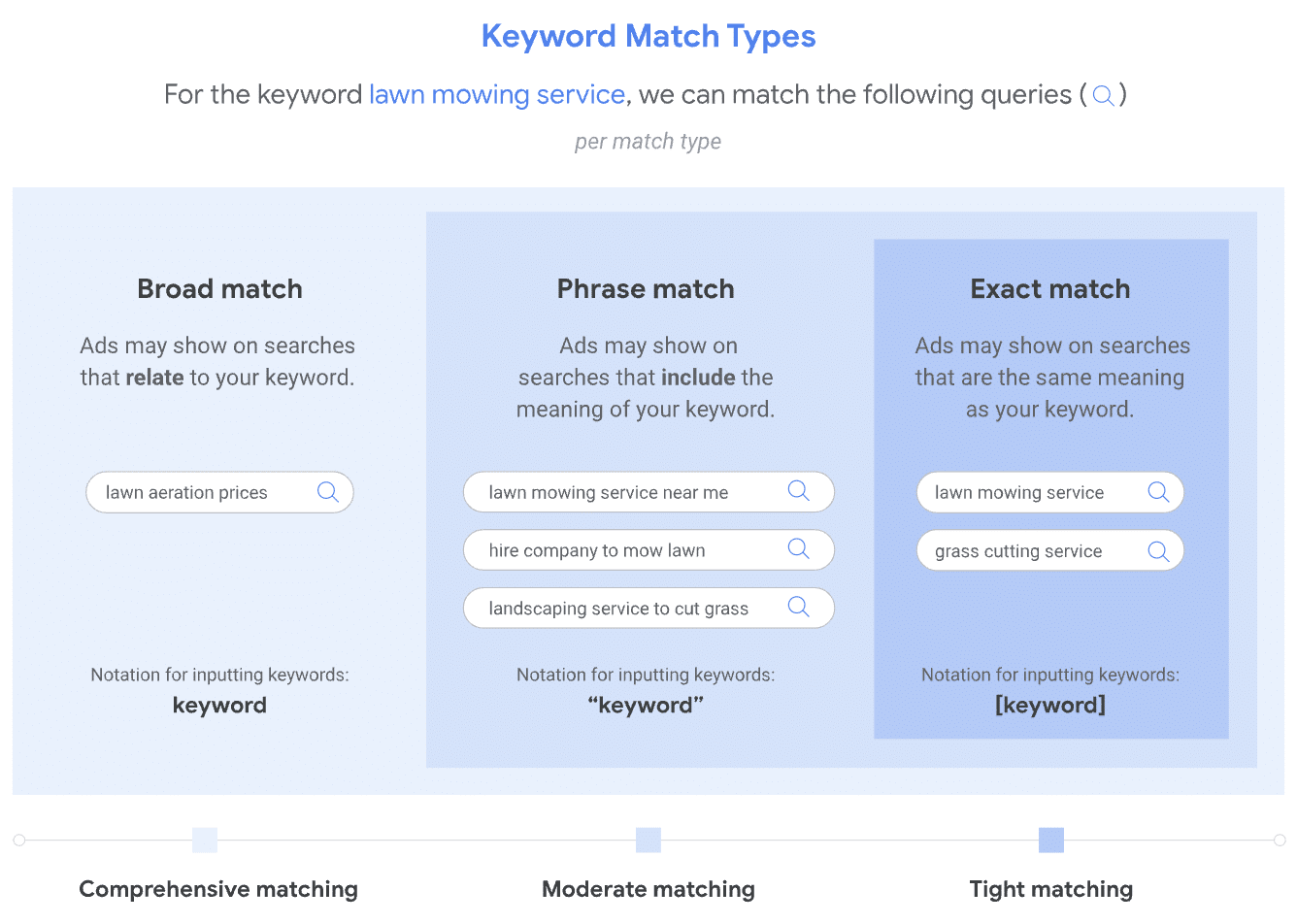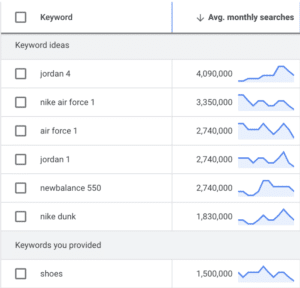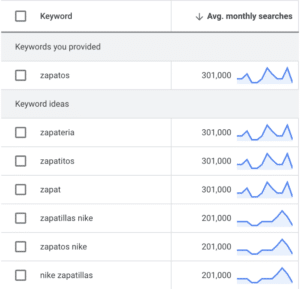Quick review of the different match types
When it comes to Google Ads, one of the most important concepts to understand is the match type. Match types have evolved during the time and determine how closely a keyword needs to match a user’s search query in order for your ad to show. The most common match types are exact match, phrase match, and broad match. In this blog, we’ll be focusing on the latter and how it can be useful for your Google Ads campaigns. Before that, below is a quick summary.

Source: Google. (n.d.). Ad formats on the Google Display Network. Google Ads Help. Retrieved from Google Support.
Comparing broad match vs phrase match and exact match
Broad match is a keyword match type that allows your ads to show for searches that are related to your keywords, even if those searches don’t contain your exact keyword or close variations of it. For example, if your keyword is “shoes,” your ad could show for searches like “sneakers,” “footwear,” or “sandals.” This makes it a powerful tool for reaching a wide audience and generating more clicks and conversions.

An example of broad match with keyword “shoes”

An example of broad match with keyword “zapatos”
However, this match type can also be a double-edged sword. Because your ads can show for a wide range of searches, it’s important to carefully monitor your campaigns to ensure that you’re not wasting money on irrelevant clicks. One way to do this is to use negative keywords, which we’ll discuss later in this article.
In recent years, Google has made some changes to broad match and its related match types. One notable change is the removal of modified broad match, which was a match type that allowed advertisers to specify certain keywords as “must-haves” in a user’s search query. For example, if you used the modified broad match keyword “+running shoes,” your ad would only show for searches that included the word “running.”
Helping your businesses grow
Broad match, which is fueled by Google’s AI, has enabled brands to uncover new search queries that drive performance.
Previously, marketers have been hesitant to adopt broad match keyword strategies due to concerns over lower relevance. However, with the advancements in AI, broad match is now capable of considering a wider range of signals of intent, thereby allowing it to distinguish more subtle nuances in search queries.
Admittedly, using this type of match might lower click-through rate and conversion rate. However, as long as this match type can find incremental revenue at a fraction of the cost then the decline of some metrics that are not really the final measurement of performance should not be an issue. A recent Google study showed advertisers who transitioned from exact match to broad match see 35% more conversions on average. Best Buy, who combined the this match type and AI in other parts of their businesses, achieved a 42% higher omni-channel revenue.
Recommendations on how to use Broad Match
Now that we’ve covered the basics of broad match, let’s talk about how you can use it effectively in your Google Ads campaigns. Here are a few tips:
1. Focus on conversions: Leverage SmartBidding in combination with Broad Match to let the algorithm identify which keywords are driving the best results so that your budget and efforts are focused on those keywords.
2. Use broad match to expand your reach: This match type is a great way to reach new audiences and generate more clicks and conversions. By allowing your ads to show for a wide range of searches, you can attract users who might not have otherwise found your business. Just be sure to monitor your campaigns carefully by running Search Query Reports (SQR) very often to avoid wasting money on irrelevant clicks.
3. Use negative keywords to refine your targeting: Negative keywords are a powerful tool for controlling which searches your ads. Exclude irrelevant search terms and ensure that ads are not shown for irrelevant searches. This helps optimize ad spend and improve relevance of ad campaigns.
4. Monitor your campaigns regularly: Keep an eye on your ad performance and adjust your bids and targeting as needed. If certain keywords are generating a lot of irrelevant clicks or not performing well, consider removing them or adjusting your bid strategy.
5. Use ad groups: Organize your keywords into tightly themed ad groups, and create targeted ad copy that speaks directly to the needs of that group. This can help improve your ad relevance and click-through rates.
How can Indaru help with your google ad settings for broad match and adwords
As a media consulting agency specializing in marketing mix models and data science, Indaru can help clients with broad match by doing SEM audits. Indaru can conduct performance analysis of clients’ Google Ads campaigns to track their success and identify areas for improvement.
Want to learn more about how to optimize your SEM investment?
Follow us on linkedin or contact us:
https://www.linkedin.com/company/indaru/
Featured image by Freepik




